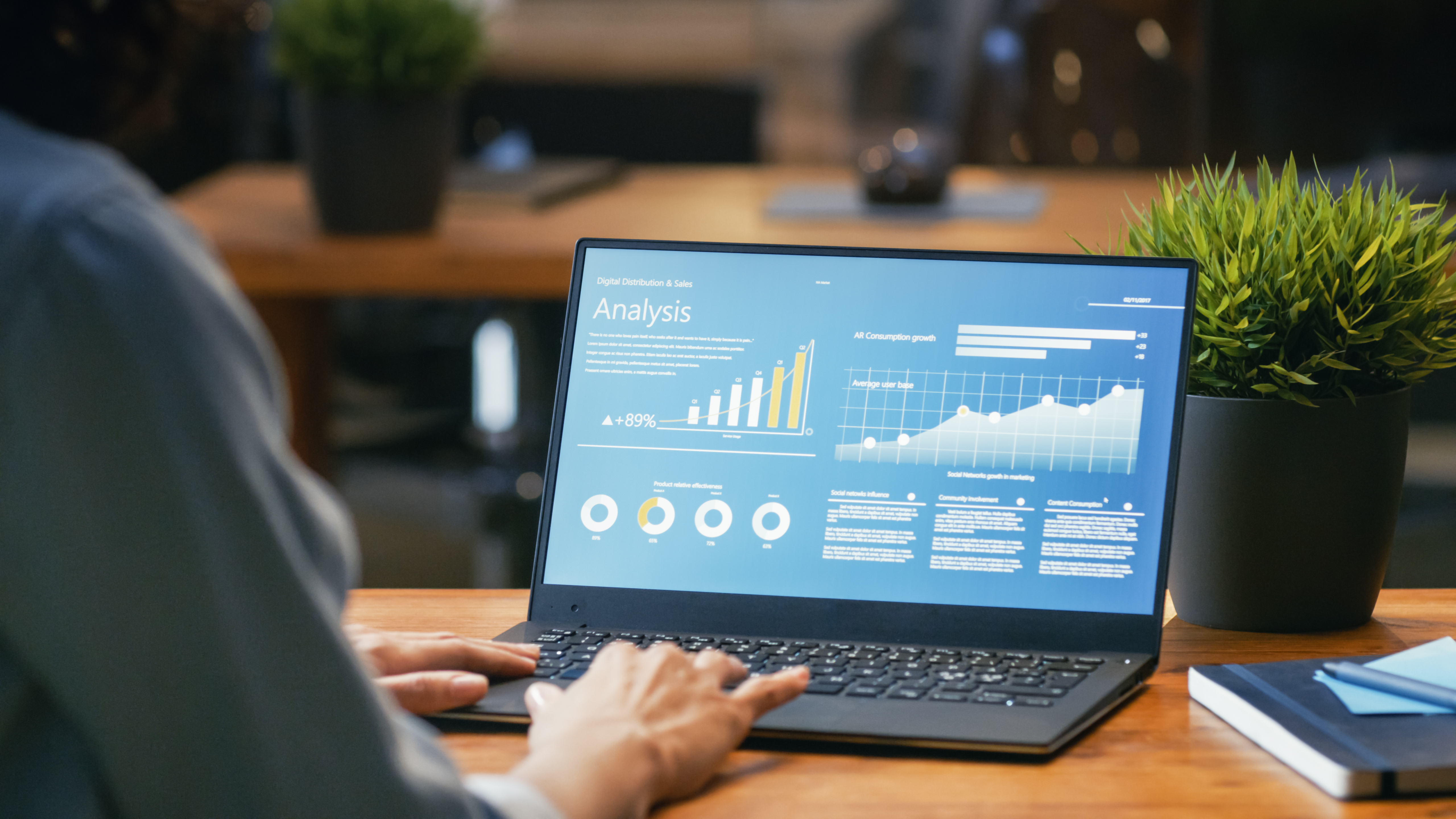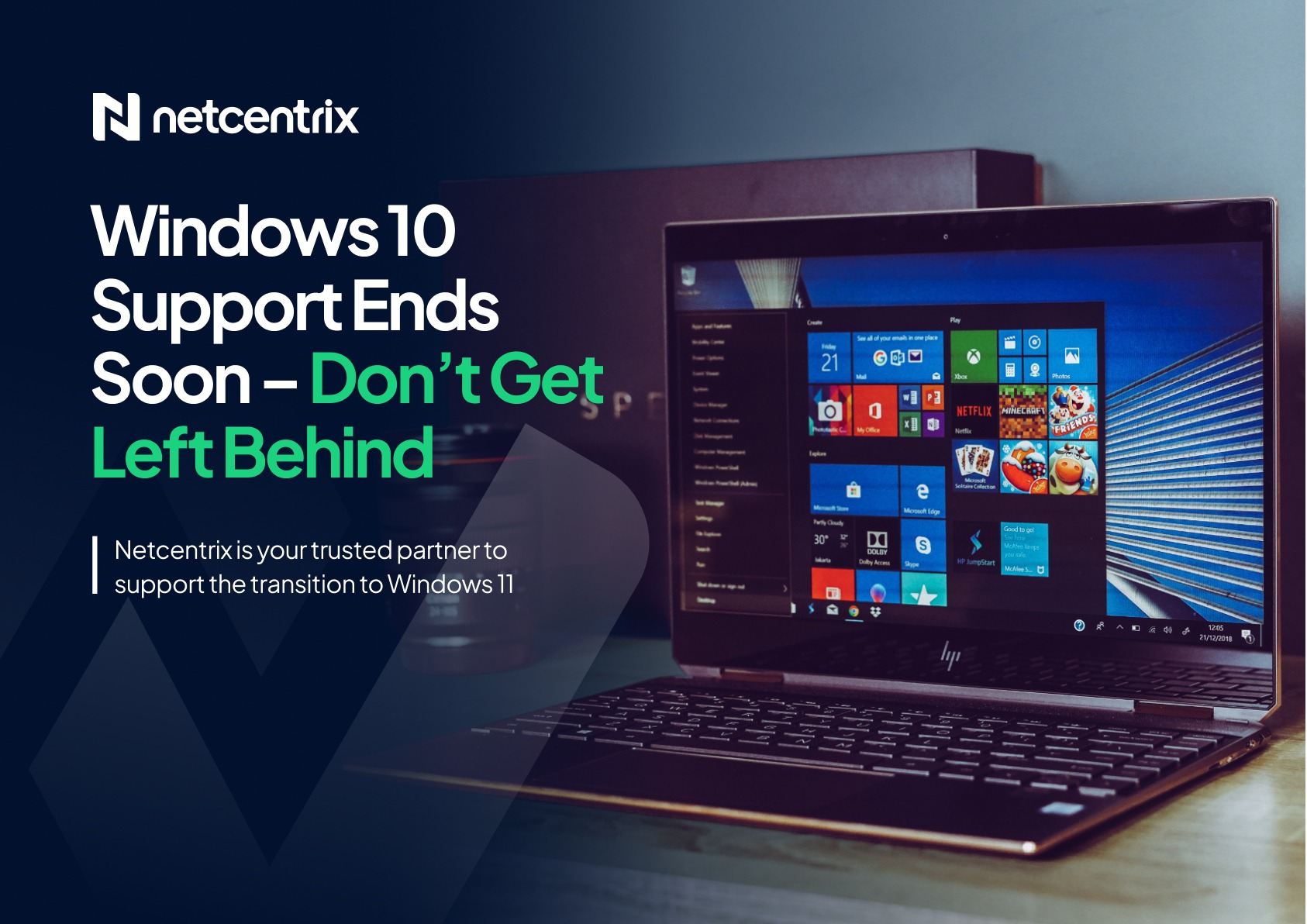Exploring the Possibilities of Solid Technology
Data. It’s everywhere. From passwords to health information and banking details, no matter how careful we are, due to the nature of modern data processing, our data is scattered across the world wide web.
For both businesses and consumers, data security is a topic that raises many concerns. Who can access our data? How is my data being shared? Most importantly, how can we prevent our data from falling into the wrong hands?
The inventor of the world wide web, Sir Tim Berners-Lee, is on a mission to allow users to have better ownership over their data, as well as present better ways for companies to process data that both benefits operations without compromising security. His Solid Project enables data storage to be centred around people rather than around applications and its starting to gain attention in the media with the potential to change the future of data processing and security.
As IT specialists who are committed to staying ahead of the curve – we’re going to explore this new technology and the potential opportunities it presents for the future of data processing and security, as well as the possible business applications of this technology.
What is Solid Technology?

Solid (derived from the term social linked data) is an opensource software project made up of conventions and tools for building decentralised social applications, based on Linked Data principles. Now, if you’re scratching your head and wondering “what on earth does that mean” – don’t worry; it seems a lot to take in, but we’re going to break it down!
Solid works by enabling users to securely store their data in Personal Online Data Stores (known as Pods). In a nutshell, Pods act as individual, secure, personal web servers, which users can use to:
– Store any kind of information.
– Control access to this information.
– Decide which data can be shared and who it can be shared with, e.g. individuals, organisations or applications.
– Revoke access to this data at any time.
How Do Solid Pods Work?
As we outlined in the previous section, Pods are individual online stores where users can hold their data. Each Pod is fully controlled by the user and data and access rules are different for each Pod. The only external input that a user may require is in the form of a provider to host their Pod(s) – similar to how cloud storage providers, such as Dropbox, work. However, for users who prefer to be fully self-sufficient and host the Pod themselves, this is possible too.
If a user does decide to acquire a Pod via an external provider, they remove the hassle and knowledge needed to host the Pod themselves. They still have ownership of their data within the Pod and how this data is stored, used and accessed, but the external provider is responsible for the hosting of the Pod within their secure cloud environment.
A key component of this technology is transparency. So, the number of Pods a user has, as well as which Solid server or IT servers they use will be visible to the applications and servers they use. Users are also free to move all of their data from one provider to another, should they find a provider that is more suitable for their needs.
How Can Solid Technology Be Used?

It’s to be understood at this technology is still very new and therefore quite complex, so it might not be available in a simplified format for everyday users for a little while yet. However, for the sake of understanding how this technology works, let’s look at a simple example of how this technology could potentially be used.
Example: Sheila’s Pod
Sheila is a tech-savvy job hunter that is currently on the search for her next big opportunity. After applying to multiple businesses, she’s starting to become frustrated with filling in forms and uploading her CV to every job portal. Sheila wants to create a Pod that houses information all about her, including her likes and dislikes, her interests and hobbies, skills, educational certifications and CV. Once set up, Sheila will be able to connect her pod to her job portal profiles and automatically update these profiles using the data from her Pod.
Although Sheila’s Pod is engaging with the job portal via the internet, she remains in control of her data, how the job portal uses this data and can revoke their access at any time. For example, when she eventually finds a new job and no longer wants the job portal to access and use her data, she can then stop the portal from accessing her information.
Of course, this is a very simple example, and the reality of the situation is that users will likely need quite a bit of technological experience to make this technology work for them whilst it’s still in its infancy. However, if this technology does take off, its reasonable to assume that it will become more accessible for everyday users in order to encourage widespread adoption.
Who Created Solid?
The Solid project is the brainchild of Sir Tim Berners-Lee, the inventor of the world wide web. Yes, the actual world wide web. You know, the huge network that’s responsible for making the internet accessible for everybody, therefore enabling the facilitation of digital communication, social media, online shopping, the ability to access websites like ours? He created that – obviously a very smart guy. Understanding Tim’s involvement with creating the world wide web is actually key to understanding why he created Solid – so, let’s spend a minute exploring that journey.
1989 is credited with the birth of an icon. No, we’re not talking about Taylor Swift (apologies to any ‘Swifties’ reading this), we’re actually referring to the birth of the world wide web. Created by Berners-Lee during his time working at CERN, the world wide web was originally intended to provide a way to meet the demand of automated information-sharing between scientists in universities and institutes around the world. However, after a few years of development, CERN published the World Wide Web software in the public domain and then made a release available with an open licence, which enabled the internet to grow and flourish to become the network we know today.
However, Tim’s original vision of the web to ‘be a platform for creativity and collaboration’ he feels is no longer being fulfilled, due to users being manipulated to surrendering their data on a regular basis. So, he created Solid and, through his company known as Inrupt, created associated technologies (we’ll explore those later) to define a ‘user-centric method of storing and sharing data’.
What is Inrupt?

Inrupt is an enterprise software company set up by Tim Berners-Lee and technologist, John Bruce, whose vision is to decentralise data through utilising Solid technology. Through this decentralisation, businesses are saved the expense of the disk storage required and the potential inconsistencies that can arise when storing large amounts of data locally. Placing more responsibility for the security of data on the user, as well as accessing information via pods, rather than on-premises data storage can simplify security and compliance challenges companies can face.
Their Enterprise Solid Server (ESS) provides a space for users to store their pods, securely, whilst enabling secure access to POD data by businesses.
How the Enterprise Solid Server Works
The Enterprise Solid Server enables businesses to provide an environment for customers to curate their Pods of data to utilise across applications.
- Infrastructure Software: Organisations deploy the Enterprise Solid Server in their cloud or on-premise environments to securely host personal data stores (Pods) for their customers.
- Pods: Pods store customer data from multiple sources in an interoperable format that is reusable across apps and services.
- Apps: Approved apps can directly access any of the data in a customers’ Pod with their consent and customers can choose how much access a business can have.
- Customers: Customers curate their Pod data to enable businesses to provide personalised experiences.
Does Solid Technology Present Challenges for Businesses?
In today’s world, businesses rely on customer data for many facets of their operations. From creating targeted marketing campaigns to generating new products and services based on their customers’ preferences and information – it’s a vital component within any business’s strategy. So, what happens when access and usage of data falls under the sole control of a user? At first glance, Solid technology looks to make data processing and using customer data to improve business processes more difficult. However, the increasing number of companies requesting and using data from customers and the misuse of this data has caused wide-spread public scepticism of personal data usage.
Furthermore, misuse of data by companies in the past has led to more stringent data security and usage regulations which can present challenges to businesses. Not only do businesses need to ensure that they are using customer data and communicating with them in a compliant manner, but they also need to ensure that they are processing this data in a strictly secure manner. Failure to do so can result in hefty fines and legal action that does hold the power to take down a business.
With Solid technology, organisations and enterprises can still access and utilise customer data to improve services and provide a more personalised experience for their customers. However, customers will have more control over this access, which can prevent misuse and restore trust that companies are using their data for positive rather than manipulative reasons. Enhanced trust can open up opportunities for new business innovations and applications. Solid technology also places more responsibility for the security of the data on the user, which can relieve some of the pressure placed on businesses by data protection regulations.
What are the Benefits of Solid Technology?

Although it is still early days for this technology, it is already being adopted by businesses and governments around the world, thanks to the possibilities of improved data processing.
- Customer-centric: Pods enable a range of customer data to be accessible from a single location.
- Data–quality: Customers update their data, so it is always accurate and relevant and can enable businesses/organisation to offer improved, personalised services.
- Interoperability: Pod data is stored in an Open Standard format, so it can be reused across applications.
- Privacy Compliance: Customers grant regulation-neutral permissions to access Pod data.
Applications of Solid Technology
From the media to healthcare and government activities, there are many applications of this technology that are already being explored.
Real-life Case Study: BBC

Like many other media companies and streaming services, the BBC face the challenge of curating personalised content based on user preferences and viewing history, in order to stay ahead of competitors. In this modern age, users are expecting more personalised viewing experiences than ever before.
On the other side, users area unable to access their own streaming data, which means it’s not possible for them to curate and change data to represent their current viewing preferences, which means the BBC are having to make educated guesses about the content their viewers are looking for.
The BBC’s challenge was to improve streaming recommendations by leveraging the streaming history of a user across different services and by enabling users to curate their streaming data, so they had access to up-to-date information for accurate, personalised experiences, whilst simultaneously managing and protecting that data in a transparent manner. Commercialised Solid technology held the answer to these challenges.
The BBC R&D team developed a recommendation engine that uses data from Pods, which are provided by Inrupt’s Solid technology to deliver new insights. The BBC’s first project using Pods integrated viewing data from iPlayer, Netflix and Spotify to provide each user with improved, personalised content recommendations. This new model was made possible by Inrupt’s Enterprise Solid Server.
My PDS App
In 2021, Inrupt and the BBC produced a prototype app called My PDS, which pulled in data from Spotify, Netflix, BBC iPlayer and BBC Sounds into a user’s Solid Pod to produce better music, TV and concert recommendations. Users were invited to either create or sign into a pod and grant the My PDS app permission to read and write data within the pod. The app then collated information from Spotify and the BBC, using existing APIs and let their users manually import data from their Netflix viewing history.
Users could create their own media profile and make edits or exclude certain parts of their viewing history. The app then allowed this media profile to be accessed by BBC Sounds, which provided enriched recommendations and suggestions of relevant local events.
As well as being able to offer more customised, relevant viewing and listening experiences for their users, the BBC also enabled users to have more control over their data. Not only does this enable users to keep data up to date and relevant, which in turn benefits the BBC’s efforts to improve their service, it also makes data processing more transparent.
Real-life Case Study: Vito

Solid technology is enabling individuals to control and securely share their personal health data with third parties in order for healthcare providers to offer more personalised health services.
VITO, an independent Flemish research organisation, wanted to increase citizen and patients confidence in data-driven research to unlock the potential of personal health data. Through leveraging Solid technology, VITO helped to create ‘We Are’, a platform that provides citizens with personal data vaults using Inrupt’s Enterprise Solid Server. An initial use of this technology was the digitisation of the Patient Record Experience Measure:
1. A hospital employee first generates a personal questionnaire link within the Solid-enabled Patient Record Experience Measure app for a patient who has recently stayed in hospital.
2. The patient receives the questionnaire via email and verifies their name, as well as basic questions concerning their hospital stay.
3. The patient then completes the questionnaire and their answers are stored within their Solid pod.
4. The patient is then asked if they would like to share their answers to be included in an aggregated, anonymised dataset – if the patient accepts, We Are is granted access to their answers.
5. We Are then anonymises the answers and grants access to a hospital or regional quality of care organisation which can review the data to draw insights on the quality of care across Belgian hospitals.
Real-life Case Study: Government of Flanders
The Flanders government were looking for a solution that provided an infrastructure and personal data space for innovative data services that don’t reduce citizen trust. Through leveraging Solid technology, they were able to create a human-centric ecosystem that allowed citizens to take control of their data through “data vaults” built with Inrupt’s Solid Server.
The government created Athumi, a neutral public company to facilitate the development of innovative services, through data collaboration, whilst ensuring businesses and consumes remain in control of their data. They leveraged Solid technology to enable citizens to store their data within Pods that public and private organisations could request permission to access in order to provide innovative applications and services.
The Importance of Digital Transformation
Although it is still too early to tell whether this technology is set to change data security and storage as we know it, it’s current adoption by large, trusted organisations is a good indicator of the potential of Solid technology.
However, one thing is abundantly clear when it comes to the widespread adoption of Solid technology. Businesses and organisations who look to take advantage of Solid technology and the benefits it can provide will need to invest in their digital transformation through the implementation of effective cloud technologies. Without investment in efficient cloud infrastructures, businesses will be unable to utilise this technology effectively.
Prepare Your Business for the Future
Solid technology is just one solution that businesses can leverage if they have successfully utilised digital technologies within their operations. It is more important than ever to invest in the effective digital transformation of your business, so you can take advantage of new, emerging technologies when they become available, in order to remain competitive and provide experiences for your customers that put you ahead of the competition.
If you’re ready to optimise your business with digital-ready solutions, we’re here to help. From cloud technology to bespoke software, we have everything you need to unlock the potential of your business. Fill out our contact form or call 0333 003 0560 today!
References
BBC News | Your personal data all over the web – is there a better way?: https://www.bbc.co.uk/news/business-68286395#:~:text=%22From%20the%20beginning%2C%20I%20always,last%2020%20years%20or%20so.%22
Anmut | Data Ownership and the Solid Revolution: https://www.anmut.co.uk/data-ownership-and-the-solid-revolution/
Inrupt | https://www.inrupt.com/
Inrupt | Enterprise Solid Server: https://www.inrupt.com/products/enterprise-solid-server
Inrupt | BBC Case Study: https://www.inrupt.com/case-study/the-bbc-experiments-with-interoperable-solid-pods-to-improve-viewing-experiences
Inrupt | Flanders Government Case Study: https://www.inrupt.com/case-study/flanders-government-strengthens-a-trusted-data-economy-with-inrupts-solid-server

















